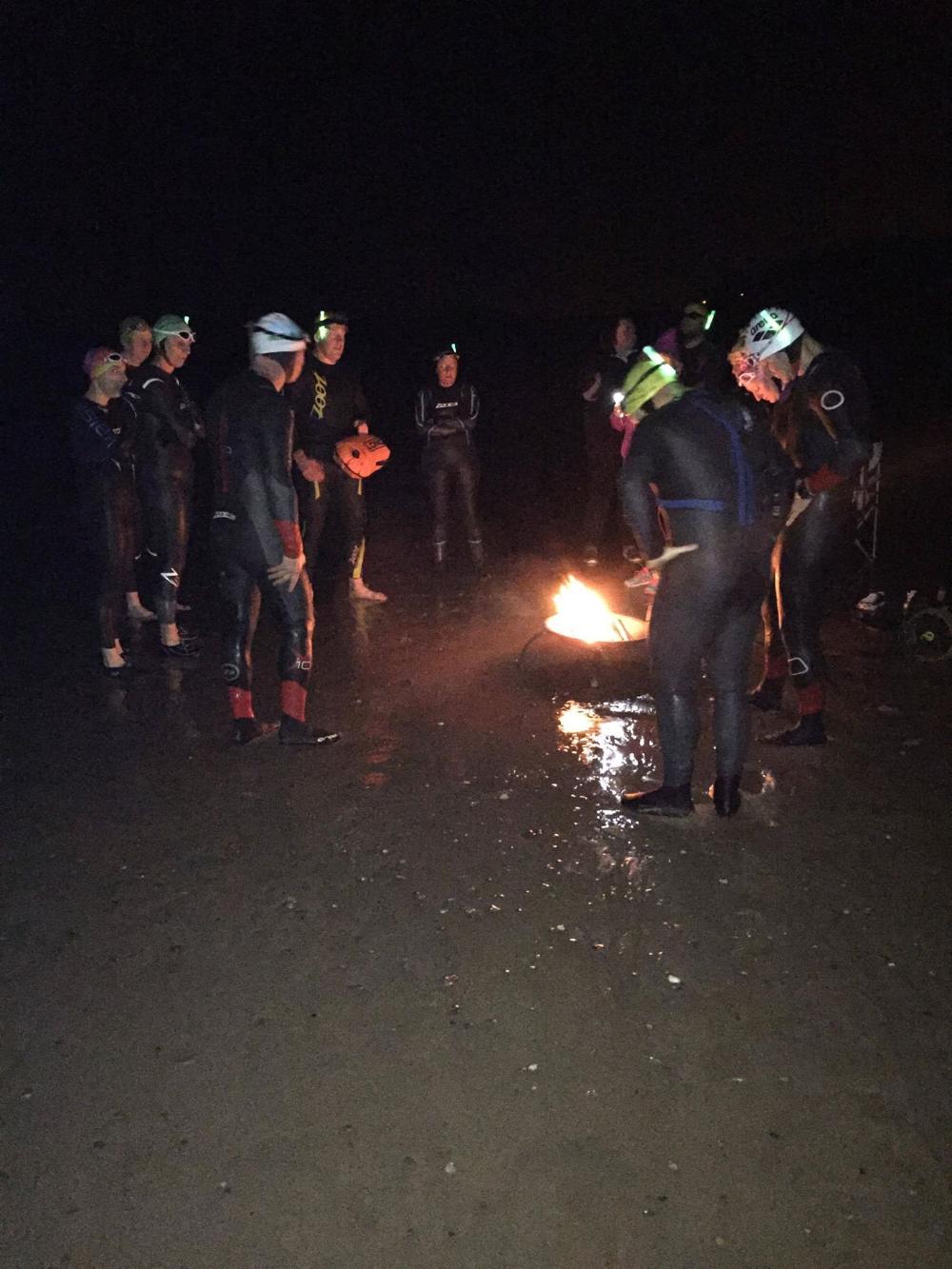For many the thought of swimming in the ocean after the summer is enough to bring shivers down their spine, literally. However swimming in the autumn and winter can be extremely rewarding in many ways.
The varied sea conditions will build your confidence and being able to handle anything the sea throws at you (within reason of course).
In fact in October & November the seas are frequently very calm, with clear skies and are perfect for sea swimming and only 1-2 degrees cooler than in the summer.
Of course, this is when the storms start though, but stormy conditions can be exciting and very exhilarating, often resulting in a massive adrenaline rush that can be quite addictive!
Cold water swimming is widely accepted as being extremely beneficial to your health. Benefits include lowering blood pressure, helping to reduce anxiety and depression and stimulating and improving the immune system; and even increasing the libido! Click here for more details on health benefits of cold water swimming.
However there is no denying the fact that the cold becomes a challenge, so what can you do to minimise this and to help build your tolerance to lower temperatures?
Like any kind of outdoor activity one secret is in being well prepared. This starts before you even get in the water, in fact before you even leave your home.
Look after and maintain your kit
Wetsuits are actually quite fragile, especially the swimming suits that are only a couple of millimetres thick.
Rinse them after every swim and hang them out in a warm, aired placed if possible, in order to dry and air them and prevent deterioration of the neoprene, odours etc.
Repair any damages to seams or to the interior as soon as you notice them. There's nothing like a torn wetsuit or a surprise rip when getting ready for a swim to put a serious dampener on the experience.
Click here for a video on how to repair rips in your wetsuit.
Invest in the right kit for the right job
A standard triathlon suit is fine for most of the year but typically in December, January and February in the UK it can get very cold and you will need more insulation.
Swimming socks, gloves and a neoprene cap are a good place to start.
We also recommend investing in a neoprene vest that can go inside your wetsuit. We will be doing a review of one of these shortly so watch this space.
Click here to read more about the bits of kit you can use to keep out the cold.
.jpg)
Additional warm dry land kit
A key factor of cold water swimming is actually getting into the water when it is often colder outside than in the sea.
It may sound obvious but make sure you use woolly hats, thermal fleeces, thick socks and thermal or down filled jackets to keep warm before and after your swim.
A combination of a down filled body warmer and a dryrobe is enough to keep warm in the coldest of conditions.

Drink hot fluids
Prepare hot drinks in readiness for your entry and exit from the ocean. A quick hot drink before the swim will warm you up and there is nothing like a mug of hot sweet tea after a cold water swim to restore warmth to your core. A thermos flask is a standard piece of our sea swimming kit.
Use a hot water bottle
A hot water bottle stuffed inside your dry kit whilst you are swimming will provide a flood of warmth when you come to get dressed afterwards.
You can then keep the water bottle inside your jacket or on your legs or wherever you need while you get changed in order to continue warming up.
Start your car engine when you get out
If you drive to the swim site, after you exit the water and before doing anything else, start your car engine to heat it up as quickly as possible and get that car heater blasting. By the time you have changed your car or van will be nice and warm.
Prepare your dry land gear
Again, this might sound obvious but before you swim, prepare your dry land gear, laid out and ready to put it straight on without standing around in the open air. For example:
Have your hat easily at hand and get it on immediately.
Put your core clothes like base layer, fleece, body warmer nearest to your changing spot so you can get them on as soon as you get your top half out of your wetsuit.
Then as you remove the westuit over your legs, get your trousers on, and socks.
Use a piece of old camping mat to stand on and at no point should you be standing around in the open air looking for your stuff.
Use a fire pit!
This may be a bit eccentric but if there are a bunch of you going and if you are making a day (or night) of it, then it's nice to have a portable fire pit burning to help keep warm. It's also a great social focal point to swap stories about the swim, drink hot tea and have banter!

Warm up before you get in the water
This is often overlooked but it's a critical element of any swim at any time of the year, especially in the winter.
Make sure you do warm ups to stretch the muscles and get the blood flowing before you enter the water.
It helps to visualise your swim beforehand, preparing yourself for the cold but controlling the natural fear that comes with it.
Also, acclimatise yourself slowly to avoid cold water shock. This involves getting into the water slowly splashing cold water on to your face and flushing the suit before you actually start swimming. The last thing you should do is jump/dive or run straight in.
Keep at it!
Finally, to truly build your tolerance to cold water swimming you need to keep at it.
Missing several weeks of swimming and expecting the next session to be comfortable is asking for disaster! You need to do it regularly and your body and mind will get more used to it.
You will also learn how best to manage your kit so that it becomes second nature, so you know where everything is as and when you need it.
It's hard forcing yourself to get up early and go outside in the winter, but that in itself strengthens the mind and prepares you for the swim itself, which will make you feel better for the whole day.
So... good luck and go for it!
.jpg)
#FindYourEpic #OpenWaterSwimming #SeaSwimming #Pembrokeshire #SwimPembrokeshire
